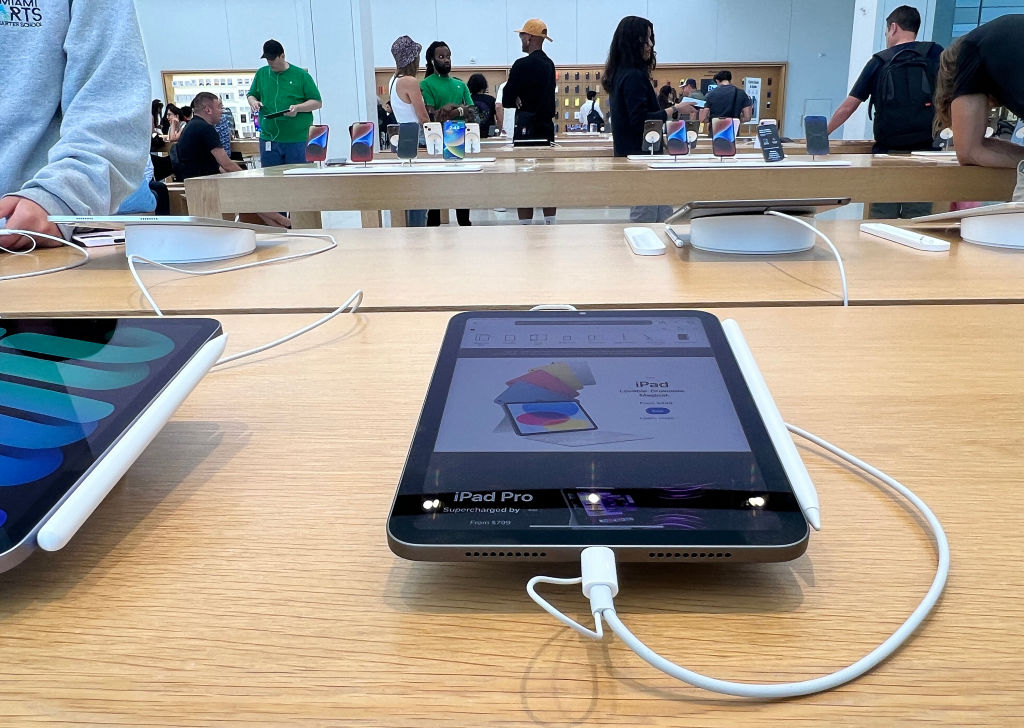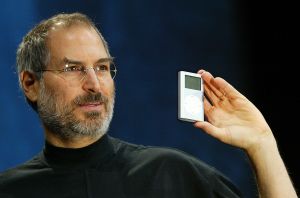In January 1984, Blade Runner and Alien director Ridley Scott shot an Apple computer Super Bowl commercial mocking Orwell’s Nineteen Eighty-Four — and it changed the television advertising landscape forever. It featured a woman in a white tank top and bright red shorts destroying a monochrome screen with a sledgehammer.
This week, Apple CEO Tim Cook promoted a new ad titled “Crush” that gave the exact opposite message and led to a furious backlash on social media. The ad begins with lights coming on in a factory setting with cultural items and artifacts stacked on top of each other, all gathered on a giant industrial press.
Then the press begins to lower as a Sonny and Cher song plays. A piano is smashed and splattered with paint buckets. An arcade machine, a drawing figure, record player, trumpet, vintage film and stock cameras are destroyed. A Greek bust is smashed, and eventually the press, drooling with several different colors of paint, closes completely. When it lifts up, the new iPad rests in the middle with a voiceover bragging about how thin it is.
As several people noted on X, the ad was a direct inverse of the Nineteen Eighty-Four ad and representative of the destruction of physical media and the culture that made America. One poster on X wrote, “Apple’s new ‘Crush’ ad (let’s call it ‘2024’) is a visual & metaphorical bookend to the 1984 ad. 1984: Monochrome, conformist, industrial world exploded by colorful, vibrant human 2024: Colorful, vibrant humanity is crushed by monochrome, conformist, industrial press.”
;768:[300×250,336×280,320×100];0:[300×250,320×100,320×50]”]Wall Street Journal tech reporter Katie Deighton noted, “This ad perfectly encapsulates the insight that people think technology is killing everything we ever found joy in. And then presents that as a good thing.”
Whatever Apple intended, the reaction was catastrophic and the exact opposite of its intention. Apple might have been attempting to say that a piano can be played on the new iPad, however, the ad made it seem like the destruction of piano keys, and the human touch involved in creating on it, was unnecessary and needed to be destroyed. Sculptures might be viewed in 3-D design style, but not viewed in real life with the human eyes. And who needs books anymore when you can swipe a “page” on a flat screen?
There is another problem with the new “Crush” ad as well. As digital media moves to censor certain books, films, TV episodes and other forms of content now deemed problematic, the need for physical media is greater than ever. Apple did not just take a subtle jab at physical media and content; it literally destroyed the idea out of existence.
Art and culture may very well be headed for complete virtual-reality viewing in the next decade or so, but perhaps Silicon Valley and tech companies shouldn’t take such obvious elation in it. As controversies surround politically correct AI, and companies focus more on ESG scores than on the preservation of humanity, Apple and Tim Cook seem focused on the former, when there is a real need to prioritize the latter.
;768:[300×250,336×280,320×100];0:[300×250,320×100,320×50]”]

























Leave a Reply